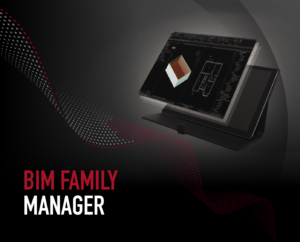

Mechanical ventilation is a growth sector and one that has partly come about based on the unintended consequences of making our new build homes more energy efficient. In part driven by the now defunct Code for Sustainable Homes and by more demanding Building Regulations, new housing is fitted with high performance insulation and heat loss has been minimised. This is positive news when it comes to sustainability, but less so when it comes to occupier comfort, especially in the summer months when over heating becomes an issue. A study for UK Green Building Council – ‘Healthy housebuilding: Making 300,000 new homes a year better places to live’ – shows satisfaction with summer comfort levels in new homes is at just 76%, compared to 89% for older homes. The study states ‘Careful configuration of windows (with shading if necessary) and suitable ventilation strategies will be necessary to raise wellbeing standards throughout the year.’
In order to achieve the correct level of ventilation, whole house, mechanically driven systems such as Mechanical Extract Ventilation (MEV) and Mechanical Ventilation with Heat Recovery (MVHR) are required.
Traditionally, mechanical ventilation installation has been undertaken by specialist contractors. That’s because whole house ventilation and heat recovery systems require not only an understanding of the technology but also a good level of competence from the installer in all aspects of the system, including ducting. Sadly, poor quality ventilation installations abound; so bad is the situation that Standard Assessment Procedure (SAP) actually deducts points against a building’s ventilation ducting as it assumes it will be of a poor quality! SAP calculations are used to measure the energy efficiency of dwellings and are required for all UK new build developments.
Bearing this in mind, just how difficult is it to break into this sector and is it worth the effort?
Domus Ventilation is a manufacturer of ventilation systems and we run our own BPEC accredited ventilation installer training course, so we’re biased! We’re passionate about all things ventilation and our answer is therefore obvious. So, rather than listen to us, we think it would be far more useful for you to hear from someone who has recently branched out into ventilation from the plumbing sector. Matthew Broad, co-owner of H2O Building Services Ltd. based in South Wales, spills the beans.
Established for over ten years, albeit in different forms, H2O initially purely provided plumbing and pipefitting services. Over recent years, the company has grown and expanded its services to include sprinkler design, installation, signoff and maintenance and full mechanical packages in both residential and commercial sectors, primarily in South Wales, but also further afield. The majority of these are undertaken in-house, but a reliable sub-contract team of between 12 – 20 operatives are on hand to complete specialist works (under floor heating, air conditioning, BMS controls, insulation, chlorination, servicing and commissioning) under H2O’s supervision.
The latest addition to H2O’s in-house services is mechanical ventilation. The company was sub contracting this, but saw it as a potentially profitable service to bring in house and also meant they could retain greater control of the overall work being conducted under their name.
H2O has not found the move into ventilation too challenging, as a number of skills are transferable, as Matthew explains: “there are a lot of similarities between ventilation and plumbing, so this helps us a lot when installing. Our guys are used to running between four to eight different pipework systems in, so to run a couple of 204 x 60mm plastic ducts in to an MEV system came relatively easy to our operatives, with the help and guidance of a few people along the way.
“However, MVHR was a bit more difficult and demanding. The most challenging aspects of MVHR was familiarising ourselves with the different types of duct fittings available and also the concept of the system itself and how to install the first fix well enough to make the second fix (on show) look the best it can. Getting the bracketry correct is key to the installation looking its best. The more and more we are fitting the MVHR systems, the more confident we are getting with it; practice makes perfect!”
H2O has received excellent support from VME Distributors Ltd. in Cwmbran, Gwent. “The importance of VME, John Dunleavy in particular, is paramount and critical to how H2O have progressed as a company on the ventilation side of things” states Matthew. “They are always on hand for advice and guidance which is key to us gaining confidence and making sure things are done correctly. John is also a critical part of advice/guidance on Building Regs etc.”. H20 is fitting Domus Ventilation units including, most recently, HRXD MVHRs into The Moorwell apartment block in Penarth.
VME’s John Dunleavy believes sourcing the right supply chain is essential to the success of installers and contractors entering the ventilation sector. “The residential sector is a growing ventilation market and we are seeing more contractors taking on ventilation as a package. Fitting ducting is a straightforward task for them, as is basic intermittent ventilation, but continuous ventilation is more complex. They often feel out of their comfort zone and they lack confidence. This is where linking up with a good manufacturer and a ventilation distributor is important, as these will supply the support and advice they need and give them access to BPEC courses for installation competency. After all, if they get it wrong and Building Control picks up on it, they may well be liable for correcting any mistakes they have made.”
John offers some further useful advice for newcomers: “Ventilation should never be an after-thought, so don’t leave decision making to the last minute. Don’t just accept a specification as it stands. I often see wholly inadequate ventilation specs that will not pass Building Control, so it’s important you understand the different types of system and what they will achieve; training is therefore important. And don’t think ‘cheap’.”
So ultimately, is it worth it? Whilst Matthew and his team haven’t found it too difficult to learn the basic installation skills, he thinks the housing sector still has a way to go: “I think the industry, especially housing, still needs convincing of the benefits of these ventilation systems. However, we are doing a lot of flats at the moment and definitely seeing an increase in it. I think it is the future though and will become more and more popular”.
For H2O, getting in at this stage of the game is a strategic move that it thinks will pay well in the future. The learning curve has not been overly steep and many of its operatives’ skills are readily transferable. Opportunity has knocked for H2O and it has opened the door!





